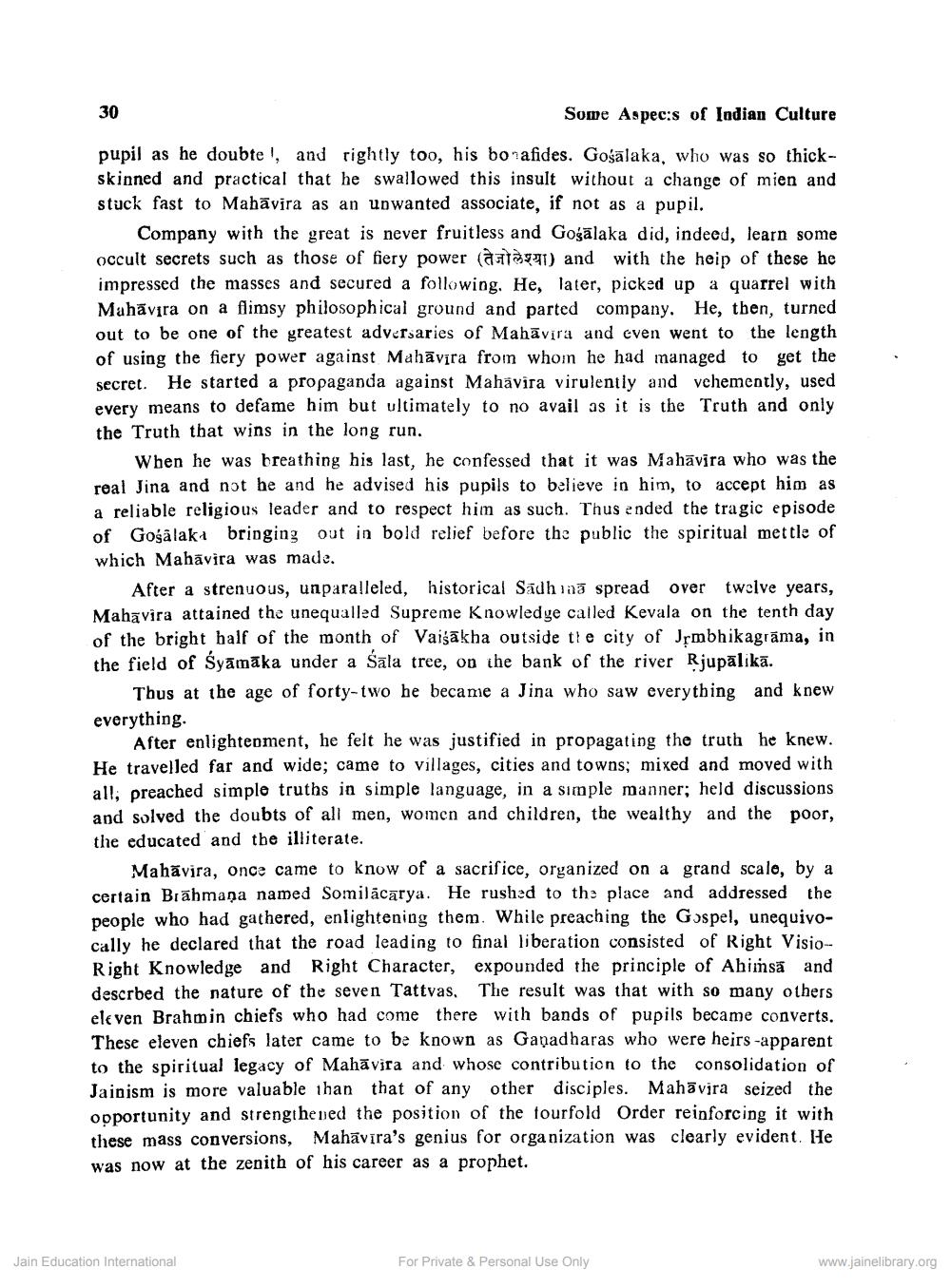________________
30
Some Aspec:s of Indian Culture
pupil as he doubte!, and rightly too, his bonafides. Gośālaka, who was so thickskinned and practical that he swallowed this insult without a change of mien and stuck fast to Mahāvira as an upwanted associate, if not as a pupil.
Company with the great is never fruitless and Gośālaka did, indeed, learn some occult secrets such as those of fiery power (aaa ) and with the heip of these he impressed the masses and secured a following. He, later, picked up a quarrel with Mahāvira on a flimsy philosophical ground and parted company. He, then, turned out to be one of the greatest adversaries of Mahāvira and even went to the length of using the fiery power against Mahāvīra from whom he had managed to get the secret. He started a propaganda against Mahavira virulently and vehemently, used every means to defame him but ultimately to no avail as it is the Truth and only the Truth that wins in the long run.
When he was breathing his last, he confessed that it was Mahāvīra who was the real Jina and not he and he advised his pupils to believe in him, to accept him as a reliable religious leader and to respect him as such. Thus ended the tragic episode of Gośālakt bringing out in bold relief before the public the spiritual mettle of which Mahāvira was made.
After a strenuous, unparalleled, historical Sadhaa spread over twelve years, Mahāvira attained the unequalled Supreme Knowledge called Kevala on the tenth day of the bright half of the month of Vaigākha outside the city of Jşmbhikagrāma, in the field of Syāmāka under a Sāla tree, on the bank of the river Rjupalikā.
Thus at the age of forty-two he became a Jina who saw everything and knew everything.
After enlightenment, he felt he was justified in propagating the truth he knew. He travelled far and wide; came to villages, cities and towns, mixed and moved with all; preached simple truths in simple language, in a simple manner; held discussions and solved the doubts of all men, women and children, the wealthy and the poor, the educated and the illiterate.
Mahāvira, once came to know of a sacrifice, organized on a grand scale, by a certain Brāhmaṇa named Somilācārya. He rushed to the place and addressed the people who had gathered, enlightening them. While preaching the Gospel, unequivocally he declared that the road leading to final liberation consisted of Right VisioRight Knowledge and Right Character, expounded the principle of Ahimsa and descrbed the nature of the seven Tattvas. The result was that with so many others eleven Brahmin chiefs who had come there with bands of pupils became converts. These eleven chiefs later came to be known as Ganadharas who were heirs -apparent to the spiritual legacy of Mahāvira and whose contribution to the consolidation of Jainism is more valuable than that of any other disciples. Mahavira seized the opportunity and strengthened the position of the tourfold Order reinforcing it with these mass conversions, Mahāvīra's genius for organization was clearly evident. He was now at the zenith of his career as a prophet.
Jain Education International
For Private & Personal Use Only
www.jainelibrary.org




